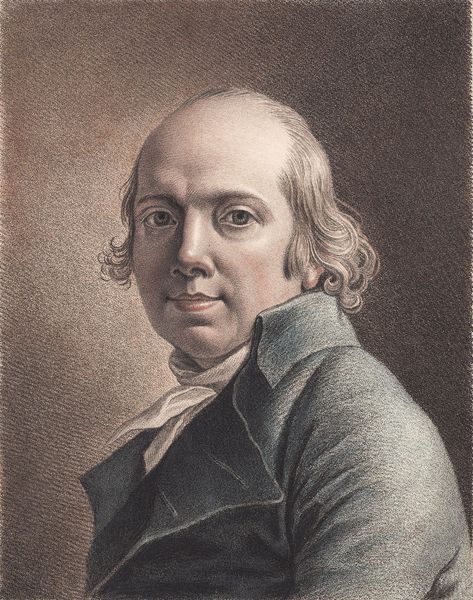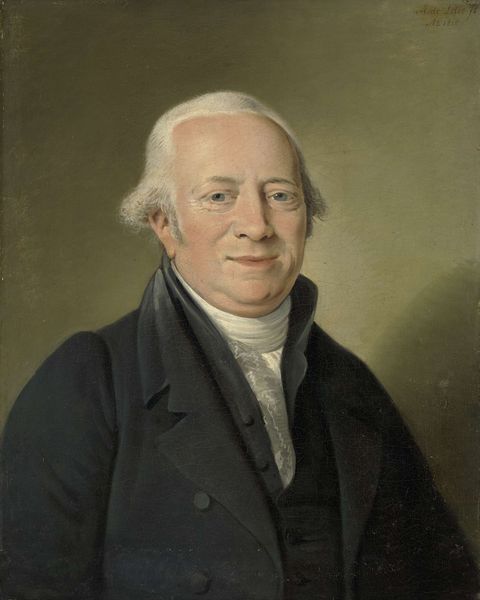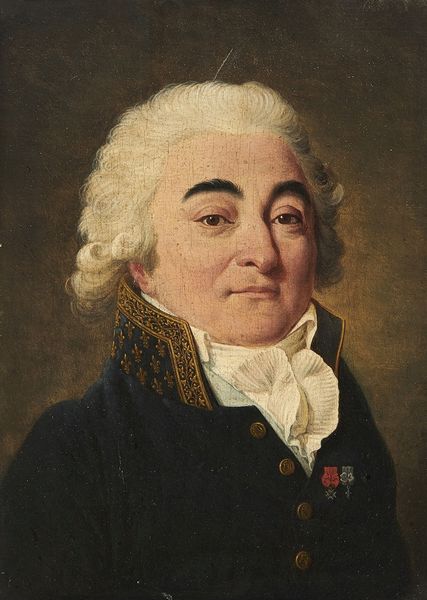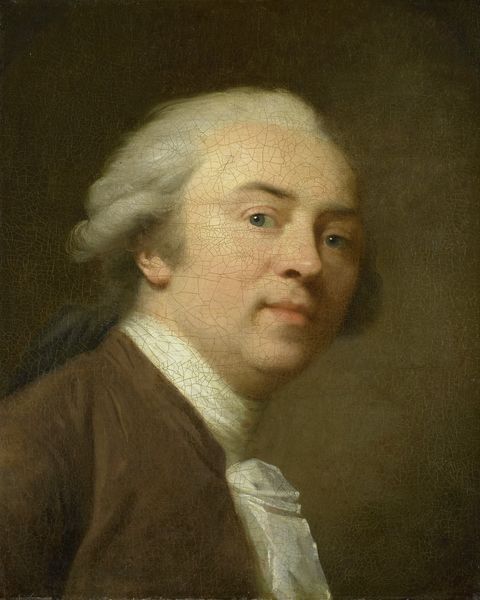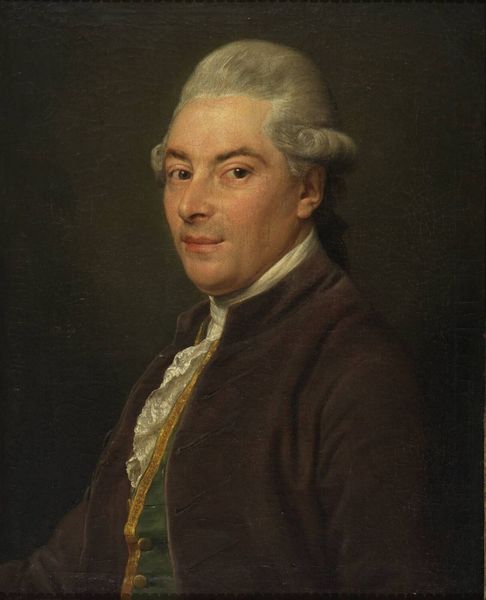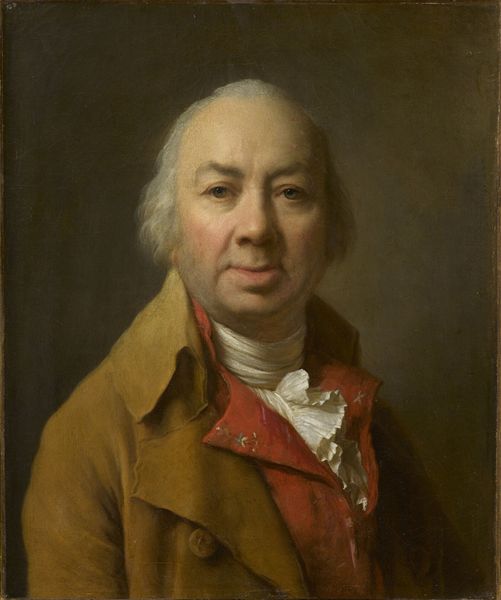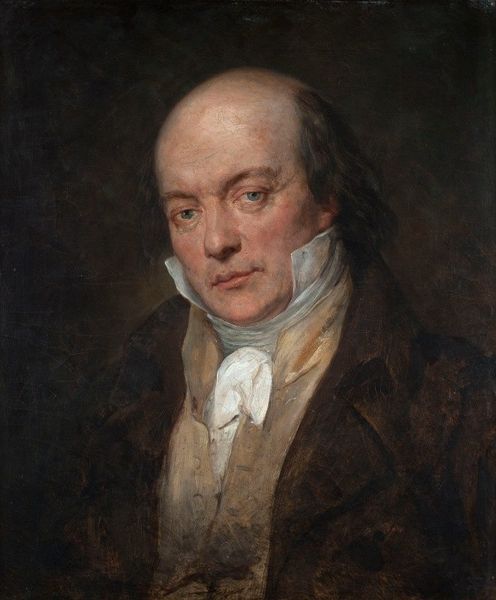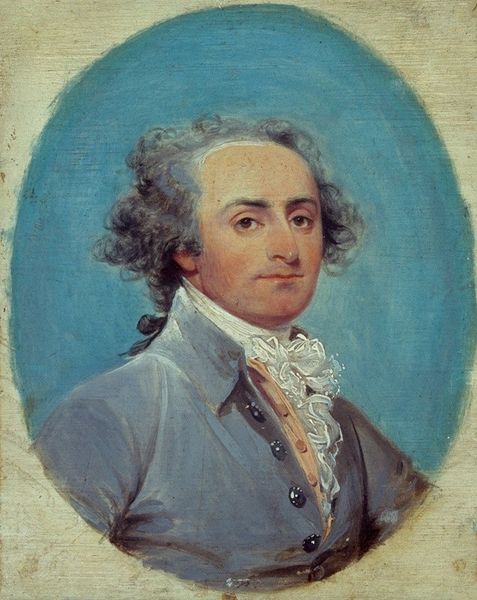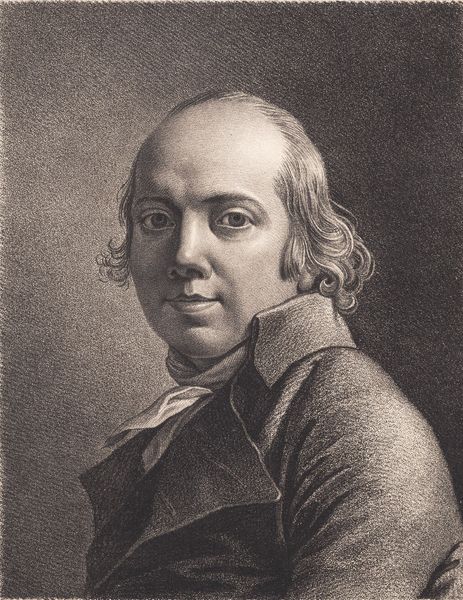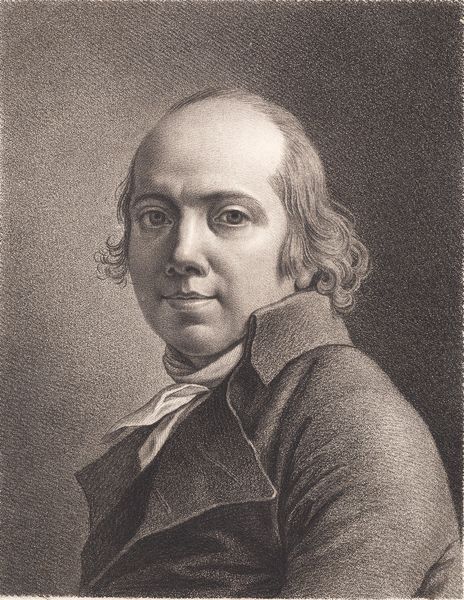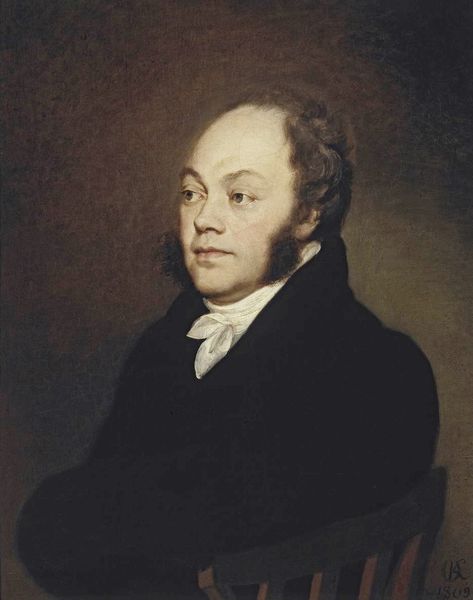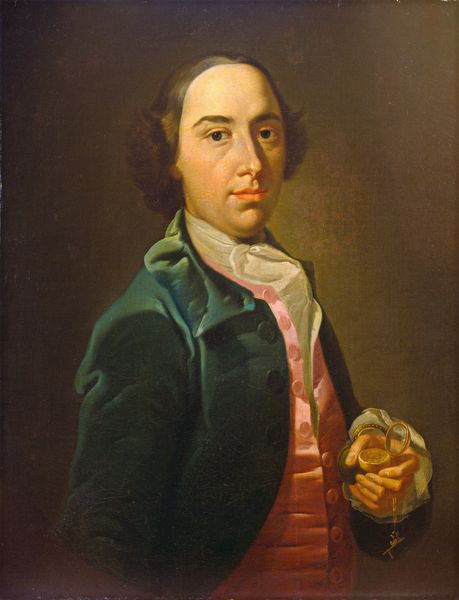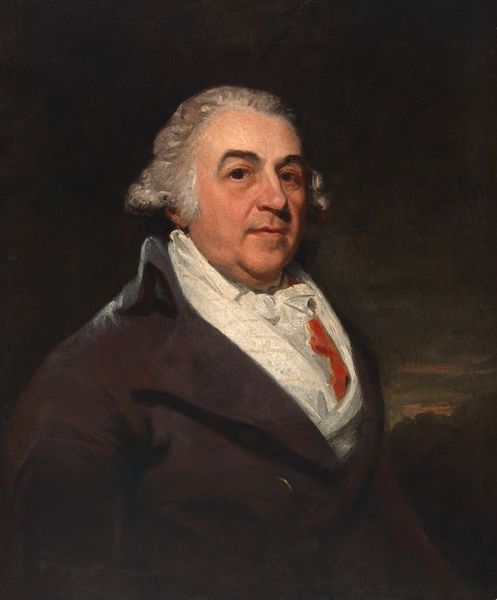
painting
#
portrait
#
figurative
#
portrait
#
painting
#
portrait subject
#
portrait reference
#
portrait head and shoulder
#
romanticism
#
portrait drawing
#
history-painting
#
facial portrait
#
academic-art
#
portrait art
#
fine art portrait
#
realism
#
celebrity portrait
#
digital portrait
Copyright: Public Domain: Artvee
Editor: This is "Presumed Portrait Of Alexandre Lenoir" by Louis Léopold Boilly. It's a painting and…it has a sort of austere, neoclassical feel. It seems like the artist focused on accurately capturing Lenoir's likeness with a high degree of realism, in contrast to some of the more flattering portrayals common at the time. How do you interpret this work? Curator: Indeed. What strikes me first is the *absence* of overt symbolism. Consider the period, potentially late 18th/early 19th century. One would anticipate subtle markers of status, profession or leaning. But here, it's all so deliberately *plain*. What we are left with is, as you noted, the face. Do you sense anything peculiar in his expression? Editor: He has a very faint smile…but the eyes suggest sadness, or perhaps just…resignation? It's like he's consciously not revealing much. Curator: Precisely! Now, Alexandre Lenoir, if it *is* him, was instrumental in saving countless French monuments during the Revolution by assembling them into the Museum of French Monuments. What could it mean, do you think, to portray such a figure with a seemingly repressed affect and limited symbolic cues? Perhaps this work communicates Lenoir's internal state, the complex feelings involved with both preserving his nation's treasures and watching its foundations crumble. The French revolution was devastating to many, yet critical for France. His neutral clothing almost presents him as outside of politics. Editor: So the lack of obvious symbols *is* the symbol itself—an understated representation of the turbulence he must have experienced, personally and professionally? Fascinating. Thank you. Curator: It shows how stripping away expected visual cues forces us to look deeper into the psychological state, and also how a time of turmoil might have removed many normal expectations in people's appearance and symbols.
Comments
No comments
Be the first to comment and join the conversation on the ultimate creative platform.
